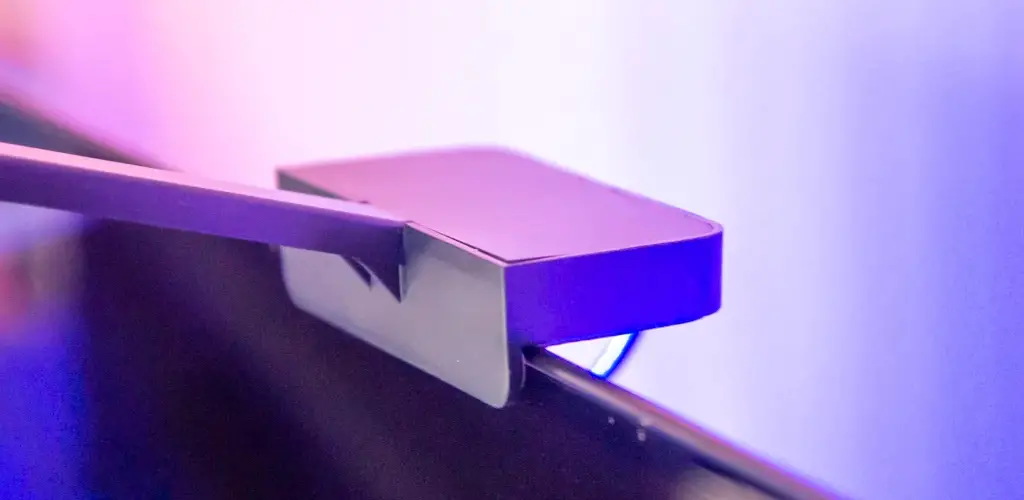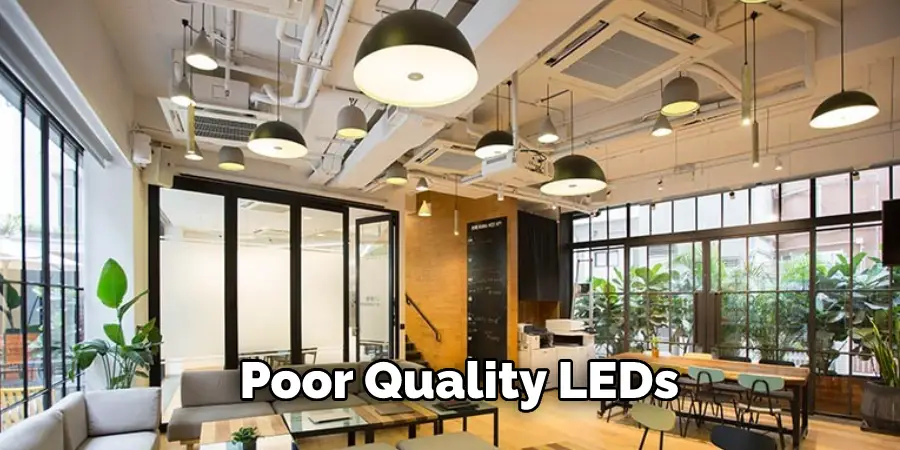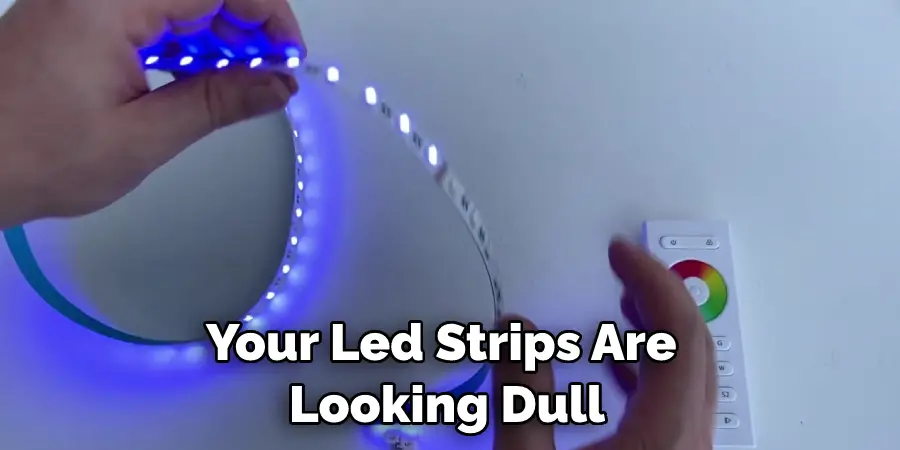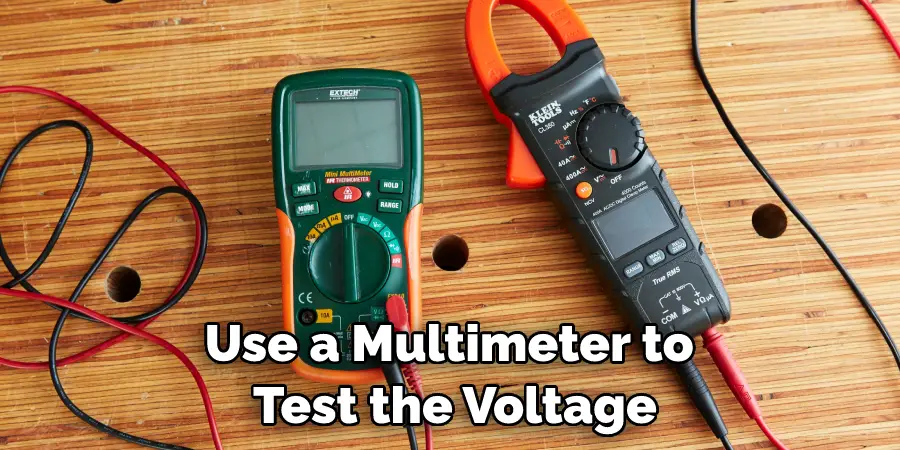Have you ever had a problem with your LED strip lights turning different colors or just not shining as brightly as they once did? If you have ever purchased and installed LED strip lights, you may have noticed that they can start to look a bit discolored after some time.

In this blog post, we will show you how to fix discolored LED strip lights using some quick and easy steps. We’ll also provide some tips on preventing the problem from happening in the future. So, keep reading, whether you’re dealing with an issue of discoloration or want to make sure your lights last as long as possible!
8 Reasons That Causes Discolored Led Strip Lights:
1. Poor Quality LEDs:
The first and most common reason for discolored LED strip lights is the poor quality of the LEDs themselves. Over time, these cheap LEDs will start to degrade and change color. If you purchased your lights from a reputable source, this shouldn’t be an issue. However, if you bought them from a cheap source, then it’s likely that the LEDs are of poor quality and will need to be replaced.
2. Incorrect Power Supply:
Another common reason for discolored LED strip lights is an incorrect power supply. Using a power supply not meant for LED lights can cause the LEDs to change color or even stop working altogether. Ensure you’re using the correct power supply for your LED strip lights.
3. Excessive Heat:
Excessive heat is another common cause of discolored LED strip lights. When the lights get too hot, it can cause the LEDs to change color or even stop working altogether. So if you’re using your lights in an area that gets a lot of direct sunlight, it’s important to make sure they’re properly cooled so they don’t overheat.

4. Loose Connections:
If the connections between your LED strip lights and power supply are loose, it can cause the lights to change color or even stop working altogether. Ensure all the connections are tight and secure before turning on your lights.
5. Voltage Fluctuations:
Voltage fluctuations are another common cause of discolored LED strip lights. If the voltage is too high or low, it can cause the LEDs to change color or even stop working altogether. Make sure you’re using a stable power supply and that the voltage is within the proper range for your lights. If you see the lights flickering or changing color, it’s a good indication that the voltage is not stable.
6. Incorrect Wiring:
If the LED strip lights are wired incorrectly, it can cause problems, including discoloration. Make sure you follow the wiring diagram that came with your lights carefully. If you’re not sure, consult an electrician. If you think the wiring might be the problem, it’s best to have a professional look at it.
7. Damaged PCB Board:
The PCB board is the part of the LED strip light that controls the flow of electricity. If this board is damaged, it can cause the lights to change color or even stop working altogether. If you think the PCB board might be the problem, try replacing it with a new one. When buying a new PCB board, make sure it is compatible with your specific LED strip light model.
8. Dirt and Dust Build-up:
Over time, dirt and dust can build up on the LED strip lights, causing them to change color or even stop working. Make sure you clean your lights regularly with a soft cloth. Be careful not to use any harsh chemicals or cleaners as they might damage the LEDs.
11 Effective Ways on How to Fix Discolored Led Strip Lights:
1. Check the Power Supply:
The first thing you’ll want to do when troubleshooting discolored LED strip lights is to check the power supply. It’s possible that the issue could be with the power source rather than the strips themselves. If you’re using an AC adapter, make sure that it’s properly plugged in and that the outlet is providing power. If you’re using batteries, check to see if they need to be replaced.

2. Inspect the LED Strips:
Once you’ve checked the power supply, please look at the LED strips themselves. If you notice any damage, such as burns or fraying, this could cause the problem. It may be possible to repair the damage in some cases, but you may need to replace the entire strip in other cases.
3. Check the Connections:
Another potential cause of discolored LED strip lights is loose or damaged connections. Inspect both ends of the strips and any connection points to ensure that everything is secure. If you notice any loose wires, carefully reconnect them. If the wires are damaged, you may need to replace them.
4. Clean the Strips:
If your LED strips are looking dull or discolored, it’s possible that they just need a good cleaning. Gently wipe down the strips with a damp cloth to remove any dirt or debris. Be careful not to use any harsh chemicals, as these could damage the strips.
5. Remove Obstructions:
In some cases, discolored LED strip lights may be caused by something blocking the light from shining through. So first, check to see if anything obstructs the strips, such as furniture or cabinets. If there is, move the obstruction and see if that fixes the problem.
6. Check the Power Supply:
Another common cause of discolored LED strip lights is a faulty power supply. If your power supply is damaged or not providing enough power, it can cause the strips to produce a dim or discolored light. Try replacing the power supply with a new one to see if that fixes the problem.

7. Use a Multimeter to Test the Voltage:
If you’re still having trouble figuring out the cause of the problem, you can use a multimeter to test the voltage coming from the power supply. Connect the multimeter’s leads to the positive and negative terminals of the power supply and check the reading. If the reading is below 12V, this could cause a problem.
8. Check the Connection Between the Power Supply and the LED Strip:
It’s also possible that the problem is with the connection between the power supply and the LED strip. First, check to make sure that the connections are snug and secure. If they’re not, try tightening them. If that doesn’t work, you may need to replace the connection entirely.
9. Inspect the LED Strip for Damaged or Broken LEDs:
If one or more of the LEDs on the strip are damaged or broken, it could cause the whole strip to appear discolored. Inspect the strip closely to see if you can identify any damaged or broken LEDs. If you find any, try replacing them with new ones. You can buy individual LEDs online or at your local hardware store.
10. Use a Heat Gun to Fix Discolored Led Strip Lights:
If your led strip lights have started to discolor, you can use a heat gun to fix the problem. First, turn off the power to the strip light. Next, carefully apply the heat gun to the affected area for a few seconds. Finally, turn on the power and enjoy your newly fixed led strip lights!
11. Use a Dimmer Switch to Fix Discolored Led Strip Lights:
If your led strip lights are discolored, you can use a dimmer switch to fix the problem. First, find a dimmer switch compatible with your led strip lights. Next, install the dimmer switch according to the manufacturer’s instructions. Finally, use the dimmer switch to adjust the brightness of your led strip lights.
Some Helpful Tips and Suggestions:
Here we have given tips on how to fix discolored LED strip lights.
1. Check your power source. If you’re using an AC adapter, make sure that it is properly plugged in and correct the output voltage. If you’re using a battery, make sure that it is fully charged.
2. Inspect the LED strip lights for any physical damage. If there are any damaged or broken LEDs, they will need to be replaced.
3. Make sure that the LED strip lights are properly connected. If they are not, they will not work properly.
4. If the LED strip lights are still not working properly, you may need to replace the entire strip.
5. When using the LED strip lights, make sure they are not in direct sunlight or near any heat source. This can damage the LEDs and cause them to discolor.

6. Before you turn on the LED strip lights, make sure they do not touch any metal surface. This can cause a short circuit and damage the LEDs.
7. If you will be away from home for an extended period, it is best to turn off the LED strip lights. This will help to prolong their life span.
Why My Led Strips Have Turned Yellow?
If your LED strips have turned yellow, there could be a few reasons for this change in color. Here are some possible explanations:
- Age and Heat Exposure: Over time, the LED lights themselves can become discolored due to heat exposure or simply age. The yellow hue may be an indication that the LEDs are nearing the end of their lifespan.
- UV Exposure: If your LED strips have been exposed to UV light, their color may fade and appear yellowish. This can happen with prolonged exposure to sunlight or even indoor lighting.
- Poor Quality LEDs: Cheaper LED strips may use lower-quality LEDs that are more prone to discoloration and yellowing. If you purchased the LED strips from an untrusted source, this might be the reason for the yellowing.
- Chemical Exposure: If the LED strips have been exposed to chemicals, such as cleaning products or solvents, this can cause the color to change. Make sure to keep chemicals away from your LED strips to avoid potential damage.
To prevent the yellowing of your LED strips, try to purchase high-quality strips from trusted sources and avoid exposing them to UV light or chemicals. If you notice discoloration, it may be time to replace the LEDs altogether.
Can the Bulbs in Led Strips Be Replaced?
Generally, the bulbs in LED strips cannot be replaced individually as they are often mounted onto a circuit board. However, if the strip has removable bulbs or is designed to allow for individual bulb replacement, it may be possible.
It’s important to refer to the manufacturer’s specifications and instructions to determine if the bulbs in a particular LED strip can be replaced. In most cases, replacing the entire LED strip is easier and more cost-effective than attempting to replace individual bulbs.
Final Words
LED strip lights are a popular and affordable way to light up spaces. However, if they are not installed correctly or exposed to water or other elements, they can become discolored. In this blog post, we have shown you how to fix discolored LED strip lights.
If your LED strip lights are discolored, the first step is to determine the cause of the issue. Several things can cause LEDs to become discolored, including water damage, overheating, and chemical exposure. Once you have determined the cause of the issue, you can take steps to correct it.
For example, if your LED strip lights were damaged by water, you will need to dry them completely before they can be used again. We hope this guide has helped give you insights on how to fix this issue. If you have any questions, then feel free to comment below! Thanks for reading!
You can check it out to Make a Computer Chair Taller
